In the film “Lawrence of Arabia”, Lawrence is asked, “What is it, Major Lawrence, that attracts you, personally, to the desert?” His response was, “It’s clean. I like it because it’s clean.” This quote is probably apocryphal but is the desert actually clean?
I have always had an interest in the Middle East inspired by a late uncle. He was an RAF serviceman posted to Transjordan in the 1930s where unfortunately he met his end at the hands of rebellious Arabs. I eventually inherited some of his effects, including an album of photographs of his time in the desert, which fostered my interest in the war history of the area, particularly in T. E. Lawrence and the Arab Rebellion, and led me to spend time in Jordan.
What most people would think of when asked to describe a desert are endless rows of barchan dunes of reddish sand disappearing off into the distance under a clear, blue sky.
The desert in southern Jordan and particularly to the east of Al Aqabah is however different as it flows into and around the remains of colossal sandstone outcroppings in an endless tide of sand blowing across from Saudi Arabia.
This is the desert made famous by T. E. Lawrence in the Arab Rebellion as he led the attack on Al Aqabah from his camp in at Wādī al-Ramm, better known today as Wadi Rum.
The Hejaz railway, where Lawrence blew up Turkish troop and supply trains, ran from Damascus through Amman to Medina and the remains of it still exist including a working section used to transport phosphates from the strip mining area south of Al Aqabah. The Hejaz passes between Al Aqabah and Wādī al-Ramm and is crossed several times by the road that leads into Wādī al-Ramm.
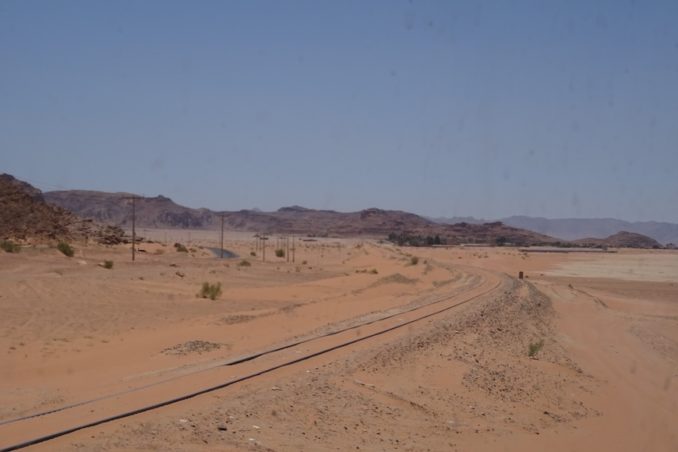
The massive sandstone outcroppings and towering cliffs above the seemingly endless sands are what gives Wādī al-Ramm its character. However, because of their size and the contrast with the flowing sands, you get a false perspective of distance. What appeared to be a short saunter to look at a nearby cliff face turned out to be several hours of walking in the hot sun across the baking sand but, as an Englishman following the footsteps of Lawrence, it was simply something to be endured.
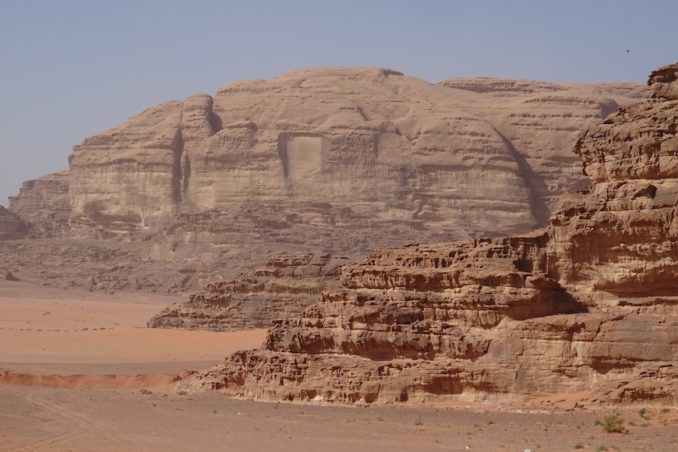

The sand in the desert at Wādī al-Ramm changes from a darkish red to a lightish yellow depending on its source, being from either local erosion or blown across from Saudi. Even on a bright, hot, cloudless day, dust devils or a sandstorm can suddenly blow up.


Eons of windblown sand has eroded the outcroppings into fantastic shapes with pinnacles, crags and stacks, some giving the illusion of having been carved by hand.
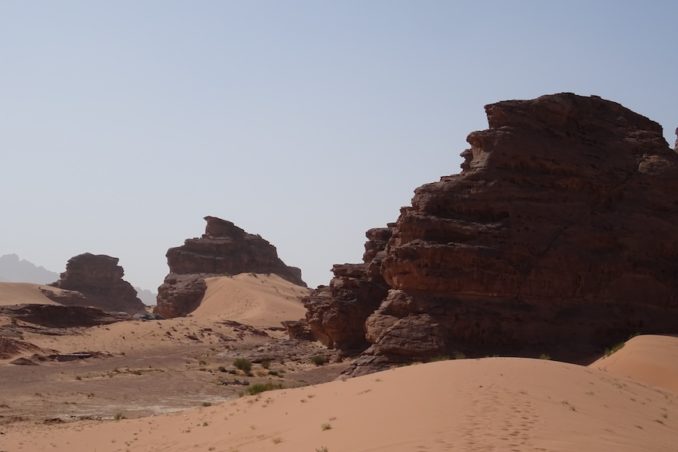
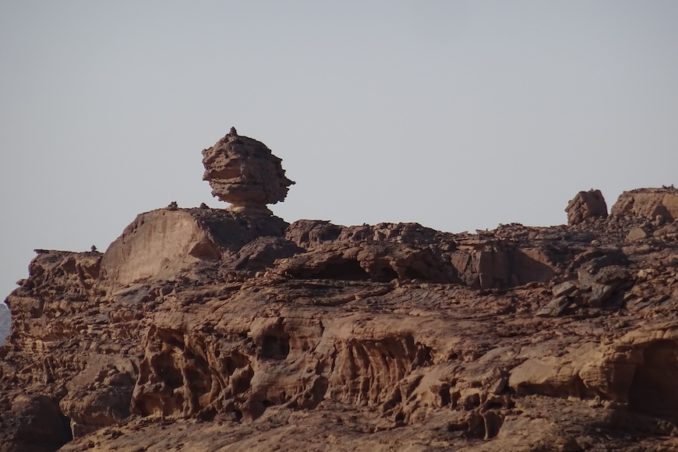

So is the desert “clean”? In its literal sense, no, as like most of the Middle East, the locals simply dispose of their rubbish anywhere outdoors. The desert is full of paper litter, rusting cans and plastic bags dropped by locals and tourists or blown in from elsewhere.
Also, the thousands of camels and Arabs roaming the desert leave behind traces of their passing, along with ever-attendant flies, and, as the locals drive whatever is the shortest route, there are heavily used tracks with wide and deep ruts. These do not fade away quickly despite the sandstorms as, for example, tracks left behind in the Western Desert by the Light Car Patrols were discovered by the Long Range Desert Group and their tracks in turn can still be found today by modern travellers despite the years of windblown sand blowing over them.
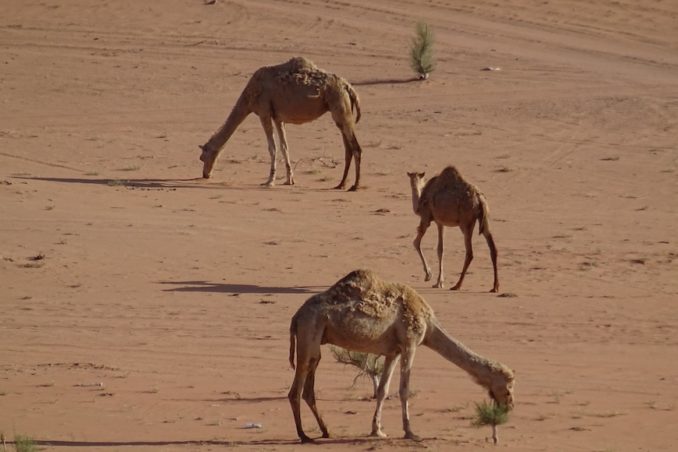
The Wādī al-Ramm desert is also being encroached upon by widely spread glamping camps of “Martian Domes” to enable tourists to get the full, Matt Damon experience along with their attendant septic tanks and suction tankers.
So no, the desert is not literally clean, but it is perhaps how Lawrence may have thought, mentally cleansing as its sheer scale and age makes you sharply aware of how small and insignificant man really is.
The desert has been there for millennia and will endure as the winds continue to erode the sandstone cliffs and in time maybe also the detritus left there by humanity.
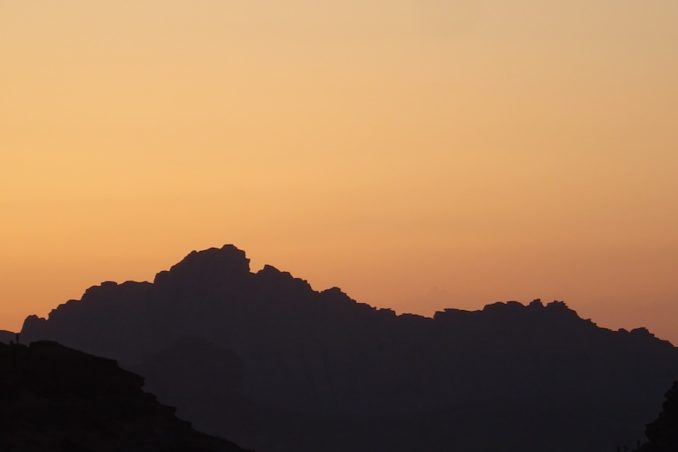
Starting from a 1939 magazine bought in an antiques shop, through research of the lives of the men who read it and discovering their youthful desert heroics, to the relics of war conserved in Amman and finally to the desert made famous by Lawrence, this concludes “Desert Mysteries”.
© text & images John Tull 2024



